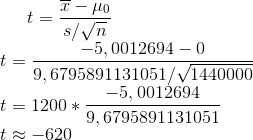We will go straight to the main part of the problem:how to communicate, where you are. Sometimes it is as easy as “one, two, three” but most likely it is as you are talking in another language compared to your listener. Let us assume you say something like “I am in the mall 500m northwest of the church”. Well there is plenty of information in it. More after the break!
First of all you have used something like a polar coordinate system which is set up with an angle (in our words northwest means nothing else than 135degree) and a distance (500m here). But there is more information than that hidden. You have used the church as a coordinate center or geodetically spoken as a datum. Yet your datum is unclear: there are probably more churches located in the city.
Third information here: i am in the mall. Well done sir… Malls pretend to be huge so we don’t know where this person will be. Is the 500m referring to the entrance or the center of the mall? Now we are talking about ellipsoids/spheroids (back to that later on).
So the correct sentence should be: “I am three meters behind the entrance of the mall. The entrance is located 500m northwest of the catholic church build in 1912”.
Let us now transform this in another system: “I am on the outer circle inside the mall and this is 2.5 blocks west and 3 blocks north from the town hall.” Now we have the same information but just changed our language. We have used a Cartesian coordinate system which is using coordinates in the x- and y-direction. These both directions are rectangular to each other. One more thing we have changed is the ellipsoid. We are now referring on the outer circle pathway in the mall and not on the outer wall of the mall anymore. Third of all we have used another datum as the town hall may be located to a crossing and is neighboring the mentioned church directly.
So: let us start with the earth. The globe isn’t a fine carved planet with a plain surface.
You have mountains, depressions and a lot more features.

These features make it hard to describe the earth geometrically, or do you know a good system do describe a strange potato? So what was invented is called the spheroid or ellipsoid. This is a very easy geometric 3-dimensional body that is formed by an rotating ellipse. This ellipse consist of a major and a minor axis. Together with the location of the center of this ellipsoid according to earth we have defined the datum. More generally the datum is said to be the center of measurements. So a datum can also be located on the ground or in your room.

Due to Earth observation and gravitational measurements science came up with a thing called geoid. This is a more complex and physical model of mother earth which includes the gravitational field build up by continents and anomalies in mantle density. Therefore it is much better to get a center of the ellipsoid according to earth as the distances between ellipsoid and geoid should be minimized in your used system. So it is sometimes better to use a strange system if you rely on highly accurate height values as by using something like an world wide geodetic system.
Now if we have the ellipsoid and a geoid we can talk about projections. Let us not get to detailed, but the projection defines whether your map is correct in area, direction (angles) or lengths. It is the method which translate your position on the globe or geoid into an position on a two-dimensional map. In our example maybe it is hard to translate but let us imagine you are referring to your position which is defined by the shadow of your head or your location of your feet or the location of your head according to earth. There are cylindrical as the Mercator projection, azimuthal, stereographic and many other projections. Each of them has it’s advantages and disadvantages.
Finally coordinate systems is a way to determine your position to a given referential position on the map.

Cartesian systems use a vertical (y-axis, “latitude”) and a horizontal (x-axis, “longitude”) to define a point. best known examples of geodetic concepts using them are the UTM or Universal Transverse Mercator coordinate System, the Gauss-Krüger System which are locally defined and the World Geodetic System. Units can be meters, miles and degrees as well. The transformation from degrees into meters or miles is a good practice for everyone as the distance between longitudes is declinining whereas the distance of latitudes remains the same.
Polar coordinate systems are much uncommon in practice but are used in sailing and flying a lot.
I hope this clarifies things a little bit. Otherwise check a book of your choice or refer to:
1) all about locations and systems
2) all about locations and systems nr. 2
and many more old and good books!



difference between datum and elipsoid